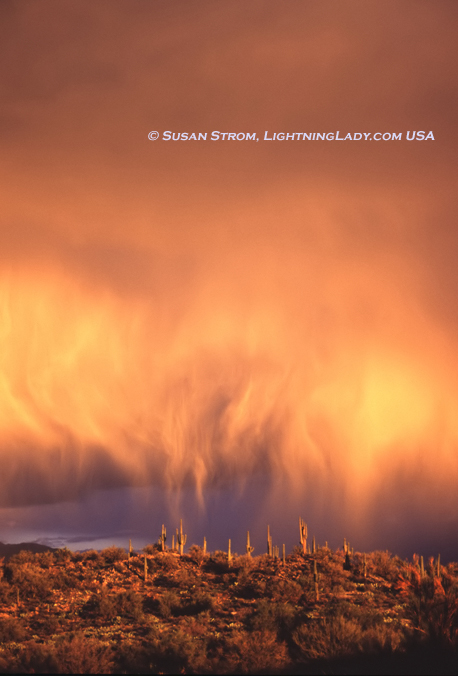Rebekah LaBar
Hi everyone,
Last fall my family and I saw something rather strange-looking. My Mom and sister were quick to say it was tornado-like, but I wasn't quite sure what to think. At first I thought it might be a hail or rain shaft, but it was pretty narrow and started curving a bit. For a while the top was laying almost horizontal before it headed down and started curving. I took some digital photos while my sister took photos with film. My sister finally got her pictures developed and our debate over what this feature was arose again.
So, what do you think? Here are some photos of the feature and the clouds around it: http://s88.photobucket.com/albums/k175/lab...202005%20Storm/
I know these aren't the best photos; I tried scanning the prints, which were better, but the quality degraded considerably.
Here is what I know--
Date: October 1, 2005, ~6pm local time
Location: Central Washington, facing east (the Columbia River is just on the other side of those hills; this feature is probably directly over or very near the river)
Warnings: There was a severe thunderstorm warning issued about an hour earlier for the county just south of us; penny-sized hail was reported with this storm.
Two chasers have already suggested it could be a landspout, another told me it very well could be a hail shaft. At nearly 30 miles away, I obviously could not detect any rotation if it was occurring.
Thanks!
Rebekah
Last fall my family and I saw something rather strange-looking. My Mom and sister were quick to say it was tornado-like, but I wasn't quite sure what to think. At first I thought it might be a hail or rain shaft, but it was pretty narrow and started curving a bit. For a while the top was laying almost horizontal before it headed down and started curving. I took some digital photos while my sister took photos with film. My sister finally got her pictures developed and our debate over what this feature was arose again.
So, what do you think? Here are some photos of the feature and the clouds around it: http://s88.photobucket.com/albums/k175/lab...202005%20Storm/
I know these aren't the best photos; I tried scanning the prints, which were better, but the quality degraded considerably.
Here is what I know--
Date: October 1, 2005, ~6pm local time
Location: Central Washington, facing east (the Columbia River is just on the other side of those hills; this feature is probably directly over or very near the river)
Warnings: There was a severe thunderstorm warning issued about an hour earlier for the county just south of us; penny-sized hail was reported with this storm.
Two chasers have already suggested it could be a landspout, another told me it very well could be a hail shaft. At nearly 30 miles away, I obviously could not detect any rotation if it was occurring.
Thanks!
Rebekah


